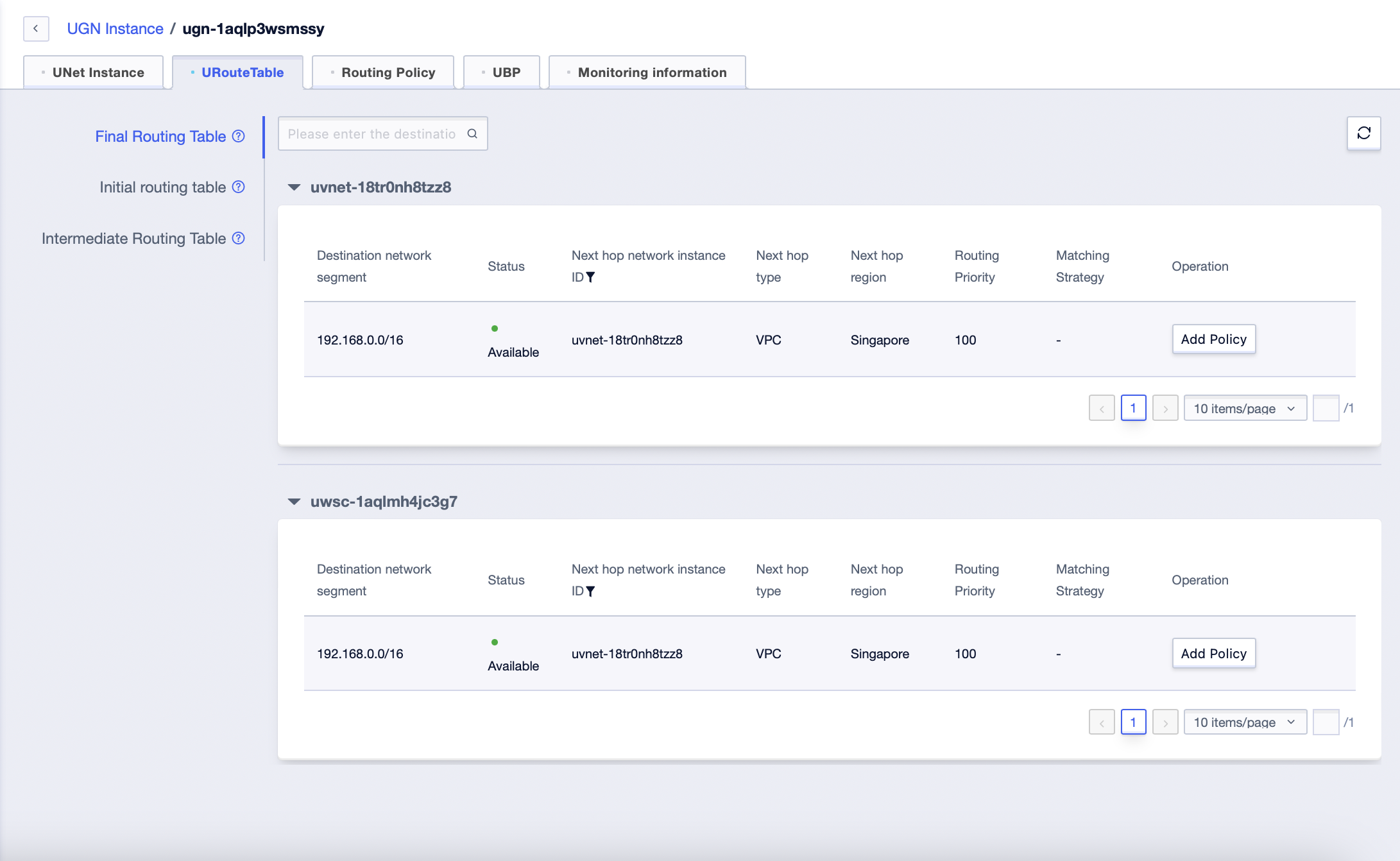Routing table
View Routing Tables
Click [Manage UGN] in the UGN instance management interface, and select and enter the “URouteTable” TAB page. All routing information within this UGN instance will be displayed on this page. It is specifically divided into three stages:
- Final Routing Table: The routing entries that are actually in effect, that is, the routing information after applying the two-way routing policy. The routing information of each network instance will be displayed separately.
- Initial Routing Table: The routing information before applying any routing policy.
- Intermediate Routing Table: The routing information after applying the routing policy in the receiving direction only.
Routing Status
The routes within the UGN may have the following three statuses:
- Available: It indicates that the route entries are still allowed to be received or sent after going through the inbound or outbound routing policies.
- Denied: It indicates the route entries that are rejected by the inbound or outbound routing policies.
- Conflicted: When multiple routes have the same content, since there can only be one available route, the route entries marked as conflicted are invalid.

Subnet Overlap
The UGN allows network instances with overlapping subnet segments to be added. However, only one route will be available in the final result, and the following principles will be followed by default:
- When only part of the network segments overlap and the status of both routes is marked as “Available”, for the overlapping part, the Longest Prefix Match (LPM) principle will be applied, that is, the route with the longer subnet mask will have priority.
- When the network segments are completely identical, the route with a higher route priority will be available, and the route with a lower priority will be unavailable. The status of the routing table will be marked as “Conflicted”.
- When the network segments are completely identical and the route priorities are the same, according to the order of network instances being added to the UGN instance, the route of the instance added first will be available, and the status of the route added later in the routing table will be marked as “Conflicted”.
Adjustment Program
If you need to adjust the default status, the following methods can be adopted:
- Replace the network segments to ensure that there is no overlap between the communication subnet segments of the UGN, so that all network segment routes can be available.
- Use routing policies to reject conflicting routes and enable the routes that need to communicate.
- Adjust the priorities of overlapping routes through routing policies to implement primary and backup routes, giving priority to the routes that need to communicate.